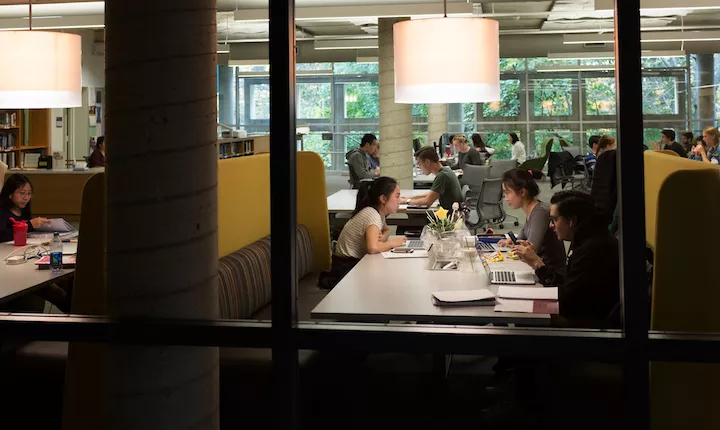Overcoming Barriers to Higher Education

Andrew Moe, associate dean of admissions and director of access, recently published a version of this commentary in The Philadelphia Inquirer.
For millions of high school seniors across the United States this fall, applying to college is a stressful time that includes campus visits, test-preparation classes, applications, and making sure your extracurriculars reflect just the right amount of depth and breadth.
For low-income and first-generation students, additional concerns prevail. These students wonder how they’ll find a way to pay for applications that average $42 each, how they can determine where they want to go if they don’t have the funds to visit the schools on their wish list, and how to navigate the vast landscape of merit- and need-based financial aid, particularly if they’re doing it all without the help of a parent, guardian, or counselor.
For many of these students, conversations about college rarely start early in life like they do for more affluent students. Whether it’s due to income, geography, class, or a myriad of other reasons, many young people don’t see other teens in their town go off to college, and aren’t taken to their parents’ alma maters for homecoming games or reunion weekends. College can seem like a distant dream for many.
Additionally, they lack access to social networks and knowledge about potential career opportunities or professions. Growing up in a small, isolated city in Wisconsin, I was one of those kids. Even though I was considered gifted and took Advanced Placement courses, including calculus and physics, when I heard someone talking about becoming an engineer I thought they meant a train conductor. We didn’t see people in my neighborhood becoming engineers who designed roads and bridges, or becoming authors, or taking jobs with the Department of Agriculture. My parents, grandparents, aunts, uncles, and cousins all worked in factories.
Fast forward through many challenging years and I’m now the director of access and associate dean of admissions at Swarthmore College. This means I spend my days breaking down the barriers I faced. My colleagues and I are always considering how we can remove roadblocks for low-income and first-generation college students. At Swarthmore, for example, we recently announced that we're no longer requiring students to pay for SAT and ACT score reports, a micro-barrier that prevents students from applying to a number of good-fit colleges. But we have more work to do.
Whether you are a rural, urban, first-generation, low-income, veteran, or LGBTQ student, a person of color or a potential community college transfer (oftentimes a student fits into more than one of these identities), unique challenges present themselves every day. For instance, rural students often don’t have access to public libraries, community-based organizations, or AP courses, and recruiters avoid visiting these sparsely populated regions because it usually takes more work and time to visit with high-achieving students. That’s to say nothing about cultural barriers, like a parent fearing their college-bound child will not return to their hometown after graduation. This was my experience.
For students and parents working their way through the application and financial aid process right now, I recommend that you stay open-minded. Every college offers something distinctive. There are schools out there that will be a better academic, social, and financial fit than others, so take the time to do your research. Ask questions and if you have the opportunity, visit college campuses with your student. Your child can also take advantage of weekends such as Discover Swarthmore, an all-expenses paid campus visit for high-achieving seniors. Dozens of selective schools offer visits like these to underserved students.
And finally, to students who have fought their way through it all, I understand the “imposter” syndrome — that feeling like you don’t really fit in even though you got in — more than you know. I understand how difficult it can be. But hang in there because the admissions office doesn’t make mistakes. You’ve been accepted for a very specific reason. We’re working very hard to make our college populations better reflect the true character and fabric of American society and the world.
Learn more about Swarthmore's holistic approach to increasing access to underserved students, which includes admitting students without regard to their families' ability to pay and meeting their demonstrated need without requiring loans.
Learn more about Swarthmore’s commitment to access and inclusion at lifechanging.swarthmore.edu.



